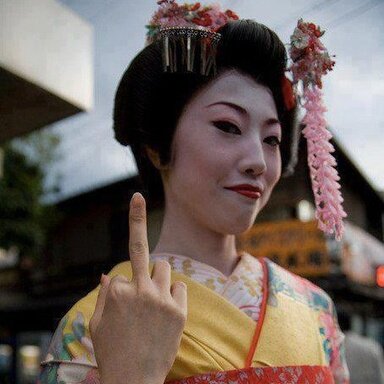- Welcome to Cook'd and Bomb'd.
-
Where the fuck is Mark Lamarr?... by McDead
[Yesterday at 11:57:54 PM] -
 American words/phrases you...
by Cold Meat Platter
American words/phrases you...
by Cold Meat Platter
[Yesterday at 11:55:14 PM] -
 Obnoxiously American words...
by Underturd
Obnoxiously American words...
by Underturd
[Yesterday at 11:49:42 PM] -
 Is Cancel Culture Over?
by Video Game Fan 2000
Is Cancel Culture Over?
by Video Game Fan 2000
[Yesterday at 11:36:12 PM] -
 That band IDLES are still...
by PaulTMA
That band IDLES are still...
by PaulTMA
[Yesterday at 11:31:59 PM] -
 Help
by Barry Admin
Help
by Barry Admin
[Yesterday at 11:29:41 PM] -
 Shit films you have a fascination...
by Elderly Sumo Prophecy
Shit films you have a fascination...
by Elderly Sumo Prophecy
[Yesterday at 11:28:02 PM] -
 Your Spectrevision Feature...
by checkoutgirl
Your Spectrevision Feature...
by checkoutgirl
[Yesterday at 11:22:02 PM] -
 that McIntyre bloke
by touchingcloth
that McIntyre bloke
by touchingcloth
[Yesterday at 11:19:29 PM] -
 UB40
by PaulTMA
UB40
by PaulTMA
[Yesterday at 11:16:07 PM]
Members
 Total Members: 17,827
Total Members: 17,827 Latest: skinnylike
Latest: skinnylike
Stats
 Total Posts: 5,582,144
Total Posts: 5,582,144 Total Topics: 106,728
Total Topics: 106,728 Online Today: 582
Online Today: 582 Online Ever: 3,311
Online Ever: 3,311- (July 08, 2021, 03:14:41 AM)
Users Online
 Users: 79
Users: 79 Guests: 504
Guests: 504 Total: 583
Total: 583 Oosp
Oosp McDead
McDead Kankurette
Kankurette Pinball
Pinball daf
daf MrMealDeal
MrMealDeal JesusAndYourBush
JesusAndYourBush kenneth trousers
kenneth trousers Proactive
Proactive magister
magister The Crumb
The Crumb TheDreamIsOver
TheDreamIsOver matjam13
matjam13 thugler
thugler FredNurke
FredNurke Hugl
Hugl Tombola
Tombola Small Man Big Horse
Small Man Big Horse Video Game Fan 2000
Video Game Fan 2000 TheMonk
TheMonk Senior Baiano
Senior Baiano copa
copa Bingo Fury
Bingo Fury Johnny Van Axel Dongen
Johnny Van Axel Dongen frozen74
frozen74 klaatu!
klaatu! Stoneage Dinosaurs
Stoneage Dinosaurs mikerus
mikerus Cold Meat Platter
Cold Meat Platter H-O-W-L
H-O-W-L Gizmo
Gizmo DJ Bob Hoskins
DJ Bob Hoskins rilk
rilk hyperwatchtick
hyperwatchtick Theotherside
Theotherside ASFTSN
ASFTSN Agent Dunham
Agent Dunham Poobum
Poobum Kelvin
Kelvin DocDaneeka
DocDaneeka Operty1
Operty1 dinglebonce
dinglebonce sprocket
sprocket MarkSymes
MarkSymes Quote
Quote non capisco
non capisco twosclues
twosclues burst_arm
burst_arm privatefriend
privatefriend Mr Balowski
Mr Balowski Bum Flaps
Bum Flaps Underturd
Underturd ElTwopo
ElTwopo Bobloblawslawbomb
Bobloblawslawbomb AnotherOli
AnotherOli persephone
persephone theplumps
theplumps Elfking
Elfking Pavlov`s Dog`s Dad`s Dead
Pavlov`s Dog`s Dad`s Dead username500
username500 Nice Relaxing Poo
Nice Relaxing PooEarly days of digital film
Started by peanutbutter, January 22, 2022, 01:32:01 PM
Previous topic - Next topic
User actions

